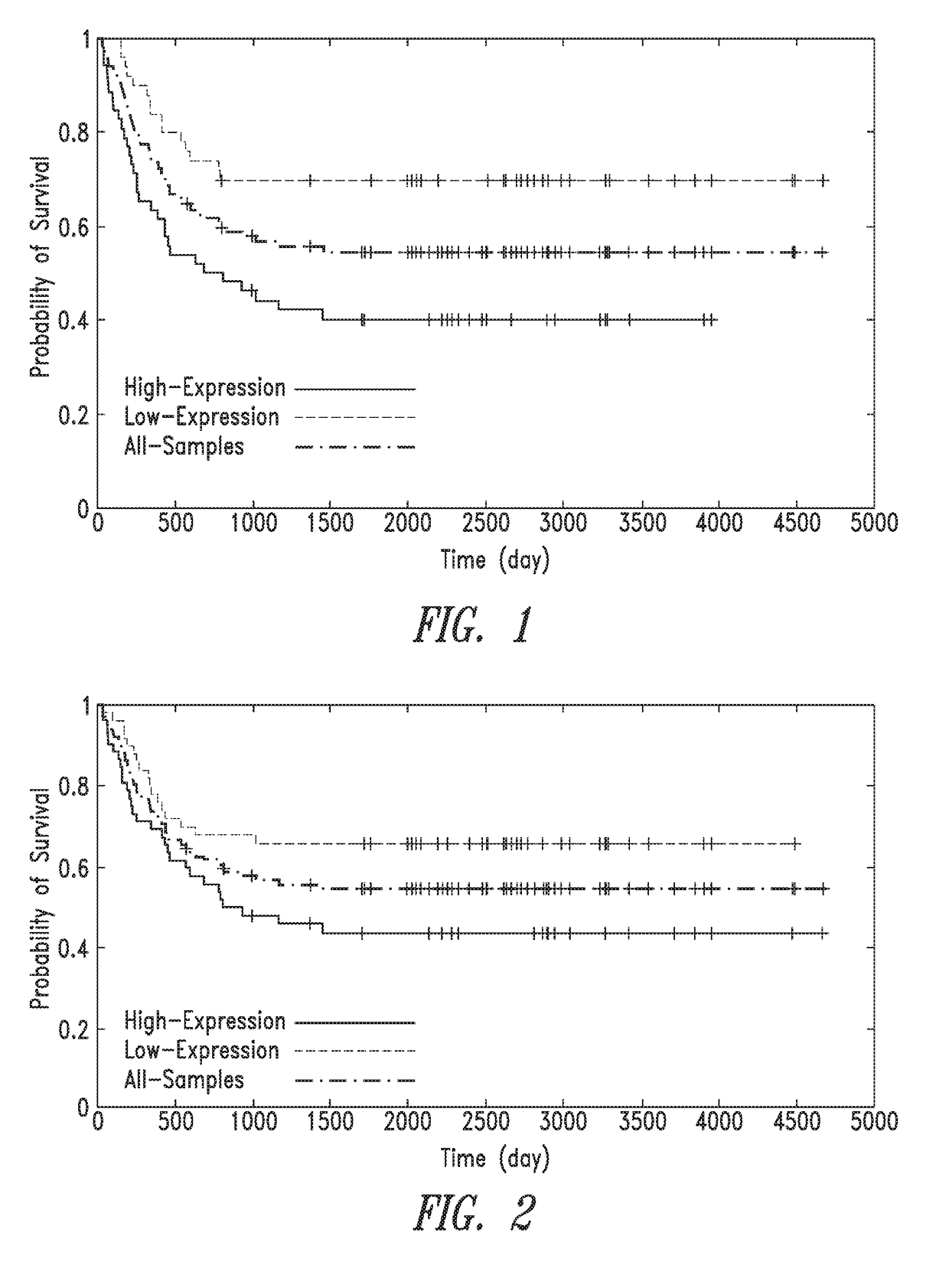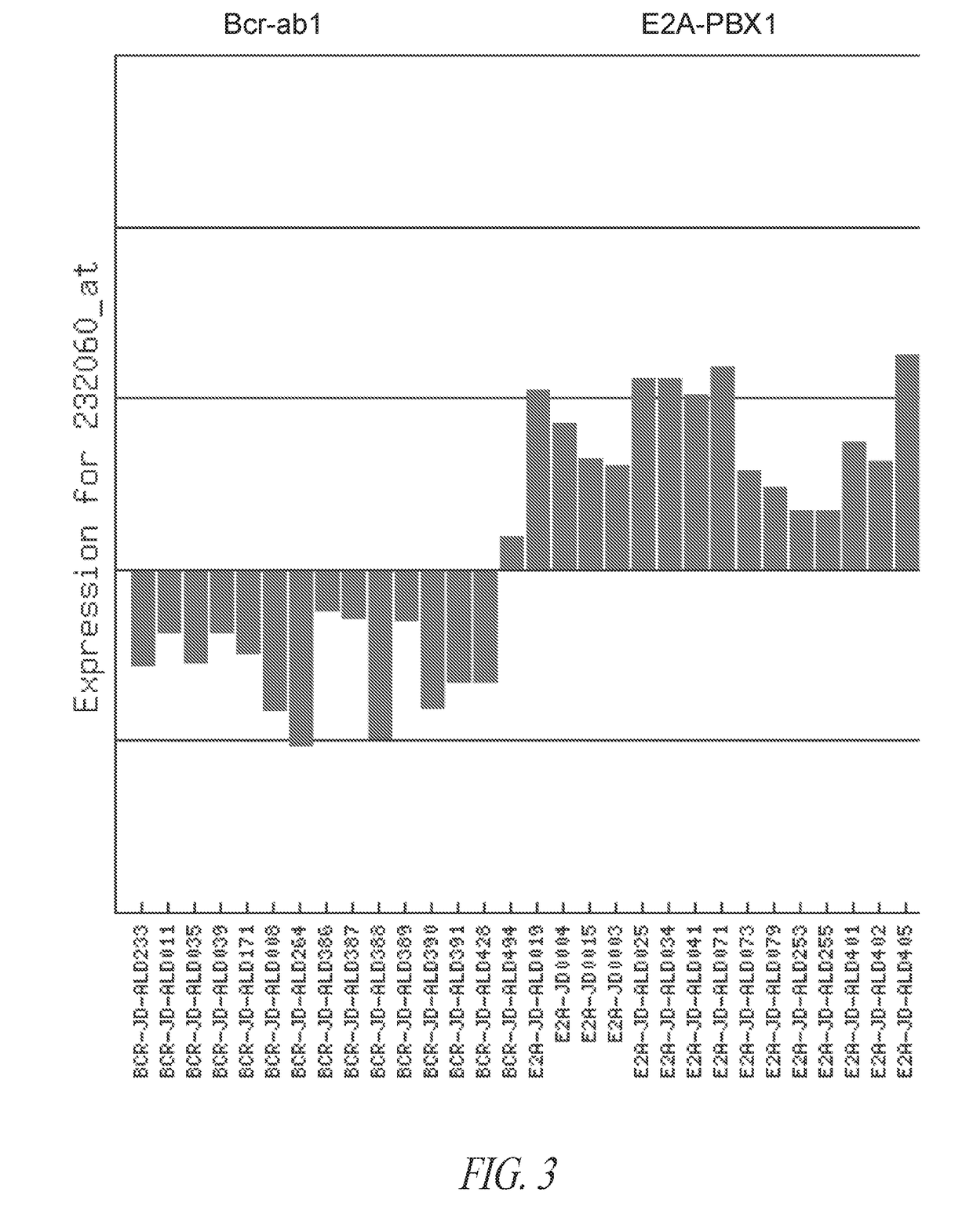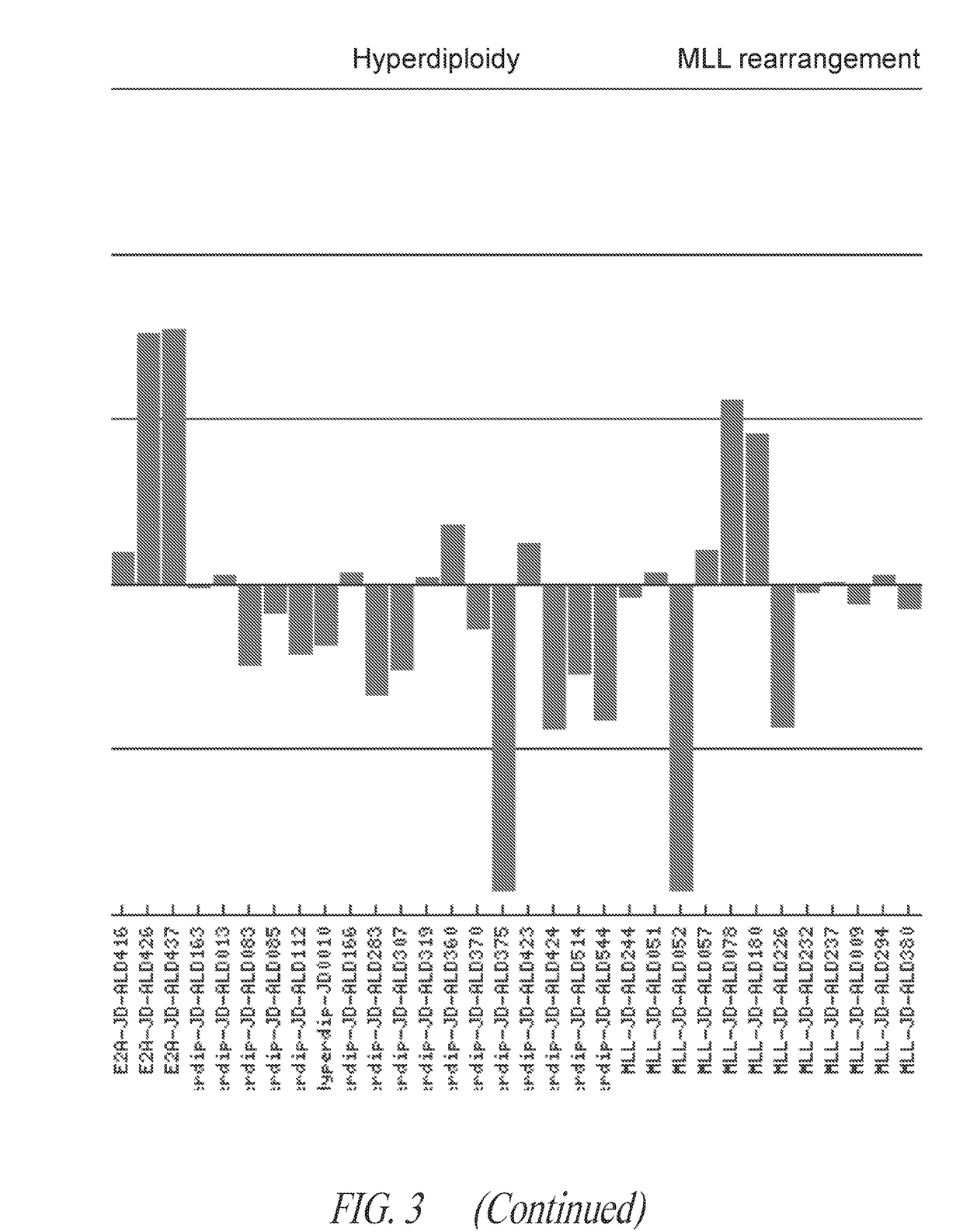Anti-ror1 antibodies
- Summary
- Abstract
- Description
- Claims
- Application Information
AI Technical Summary
Benefits of technology
Problems solved by technology
Method used
Image
Examples
example 1
Generation of Candidates of Therapeutic Human mAbs Immunospecific for Human ROR1 Extracellular Domain (ECD)
[0234]Through panning against the human ROR1 extracellular domain (ECD) protein using a fully-human antibody phage library, multiple ROR1-specific antibodies were identified that exhibited a wide range of affinity (IC50=0.11-263 nM on phage level; see Table 1).
TABLE 1Affinity ranking of ROR1-positive phage clones by IC50Clone No.IC50 (nM)P601-10.11P601-400.20P601-1090.22P601-430.23P601-3(601-3-16)*0.27P601-170.62P601-510.62P601-1080.76P601-40.93P601-131.21P601-1011.50P601-1531.53P601-2 (601-3-12)*1.75P601-1371.82P601-861.84P601-561.85P601-1201.92P601-62.12P601-182.44P601-1342.68P601-812.76P601-1492.76P601-1122.89P601-1363.02P601-1303.08P601-143.22P601-873.86P601-664.05P601-1474.05P601-574.08P601-654.23P601-1104.57P601-1415.68P601-1005.80P601-5 (601-3-2)*7.99P601-288.05P601-1038.72P601-699.81P601-10210.21P601-914.62P601-11917.70P601-5024.06P601-3727.93P601-7074.00P601-128263.18*...
example 2
Summary of Preferred ROR1 Specific Antibodies
[0244]The inventors isolated 45 antibodies according to the invention. The antibodies may be developed for therapeutic or diagnostic use. Fourteen antibodies were selected by the following criteria:
[0245]1. They represent all epitope classes and sub-groups;
[0246]2. They have high ROR1-binding affinity; and
[0247]3. They form the pool that is likely to be converted into full IgG molecules for further analysis.
[0248]For each antibody, the information is organized as following:
[0249]1. Name of antibody;
[0250]2. Epitope class and sub-group;
[0251]3. Light chain variable region DNA sequence;
[0252]4. Light chain variable region protein sequence;
[0253]5. Light chain CDRs: L1, L2, L3 DNA sequence;
[0254]6. Light chain CDRs: L1, L2, L3 amino acid sequence;
[0255]7. Heavy chain variable region DNA sequence;
[0256]8. Heavy chain variable region protein sequence;
[0257]9. Heavy chain CDRs: H1, H2, H3 DNA sequence; and
[0258]10. Heavy chain CDRs: H1, H2, H3 ...
example 3
Engineering Full Length Monoclonal Antibodies Using the Selected scFv Fragments
[0274]Although the phage display technology allows for the rapid selection and production of antigen-specific scFv fragments, the complete monoclonal antibodies (mAbs) including the Fc domains have a number of advantages over the scFv. Firstly, only full lengths antibodies exert immunological function such as complement-dependent cytotoxicity (CDC) and antibody-dependent cytotoxicity (ADCC) mediated via the Fc domain. Secondly, bivalent monoclonal antibodies offer stronger antigen-binding affinity than monomeric Fab Abs. Thirdly, plasma half-life and renal clearance will be different with the Fab and bivalent mAb. Fourthly, bivalent mAb may be internalized at different rates from scFv, altering immune function or carrier function. Alpha emitters do not need to be internalized to kill the targets, but many drugs and toxins will benefit from internalization of the immune complex. Therefore, according to the...
PUM
| Property | Measurement | Unit |
|---|---|---|
| Fraction | aaaaa | aaaaa |
| Concentration | aaaaa | aaaaa |
| Cell proliferation rate | aaaaa | aaaaa |
Abstract
Description
Claims
Application Information
 Login to View More
Login to View More - R&D
- Intellectual Property
- Life Sciences
- Materials
- Tech Scout
- Unparalleled Data Quality
- Higher Quality Content
- 60% Fewer Hallucinations
Browse by: Latest US Patents, China's latest patents, Technical Efficacy Thesaurus, Application Domain, Technology Topic, Popular Technical Reports.
© 2025 PatSnap. All rights reserved.Legal|Privacy policy|Modern Slavery Act Transparency Statement|Sitemap|About US| Contact US: help@patsnap.com



